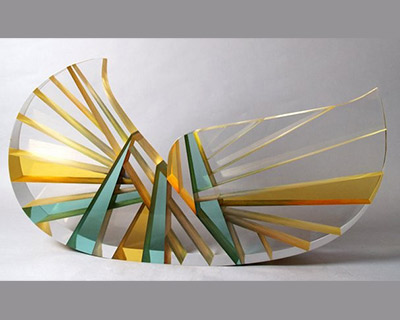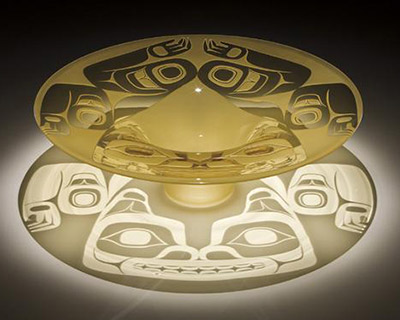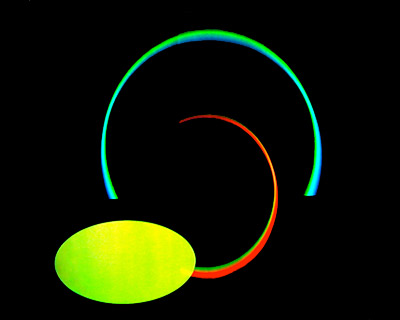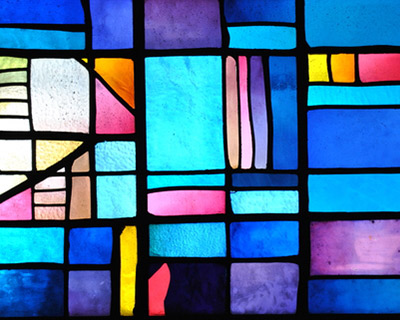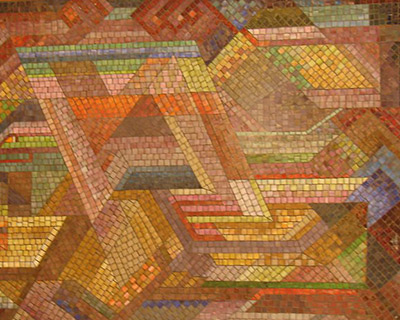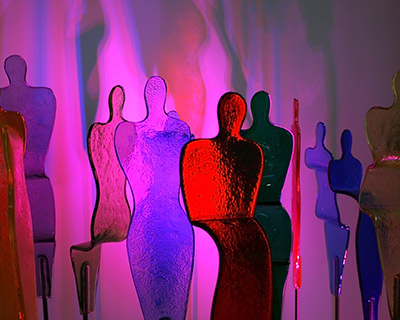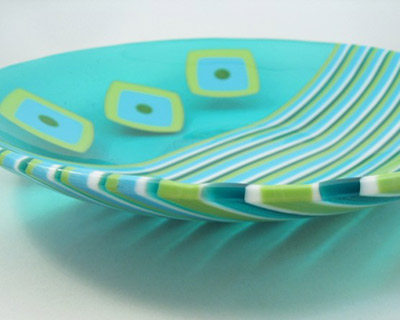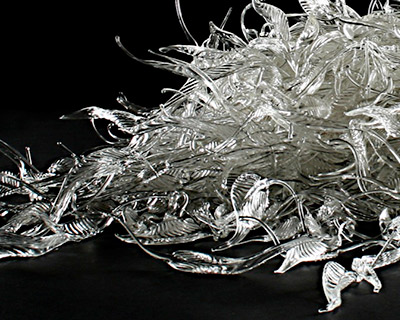Glass is not new, but it is a relatively new medium in the realm of fine art. The material itself is still surrounded by mystery, science still not having a full understanding of its properties and behaviors. This is what makes glass full of possibility, a new frontier so to speak, and so appealing to the artist.
Technology has, in the last 50 years, made glass accessible to the individual studio glass artist, whereas historically, it was only accessible to large factories or groups of craftsmen. Previous attempts by artists to work glass met with success, but techniques were not shared and were carefully guarded secrets that died with the masters of the time. Today, atists share their techniques, creating a comradery, enabling the media to be fully developed and further explored unlike ever before.
For the sculptor, glass presents the opportunity to consider the inside planes of the sculpture as well as the outside form, almost as if revealing the very inner soul of the work. Glass creates dimensionality like no other media, being both opaque and transluscent, playing with light and reflection and color unlike anything else on earth.
Besides its luminosity, color and intrigue, glass is further appealing to the aritst because of the varying processes through which it can be worked. An expensive element (many times more expensive than cast bronze), it is also difficult to work. Glass is a two-edged sword, both fragile and extremely hard, presenting many challenges and requiring technical prowess, knowledge and experience to manipulate. It is not for the faint of heart or the artist who wants simple ease of expression.
The many varied processes of glass are further discussed below, divided into three main categories of process through the temperature ranges in which the glass is worked. Cold glass is worked at room temperature or slightly heated or cooled. Warm glass is worked from around 1100 degrees Fahrenheit (slumping temps) to 1500 degrees Fahrenheit (casting temps). Hot glass is worked 2000 degrees and up. As you may see, warm glass is anything but "warm" - it is all relative in the world of glass. The actual temperatures for each process will vary depending on the type of glass worked, but these ranges can offer you a base of understanding.

